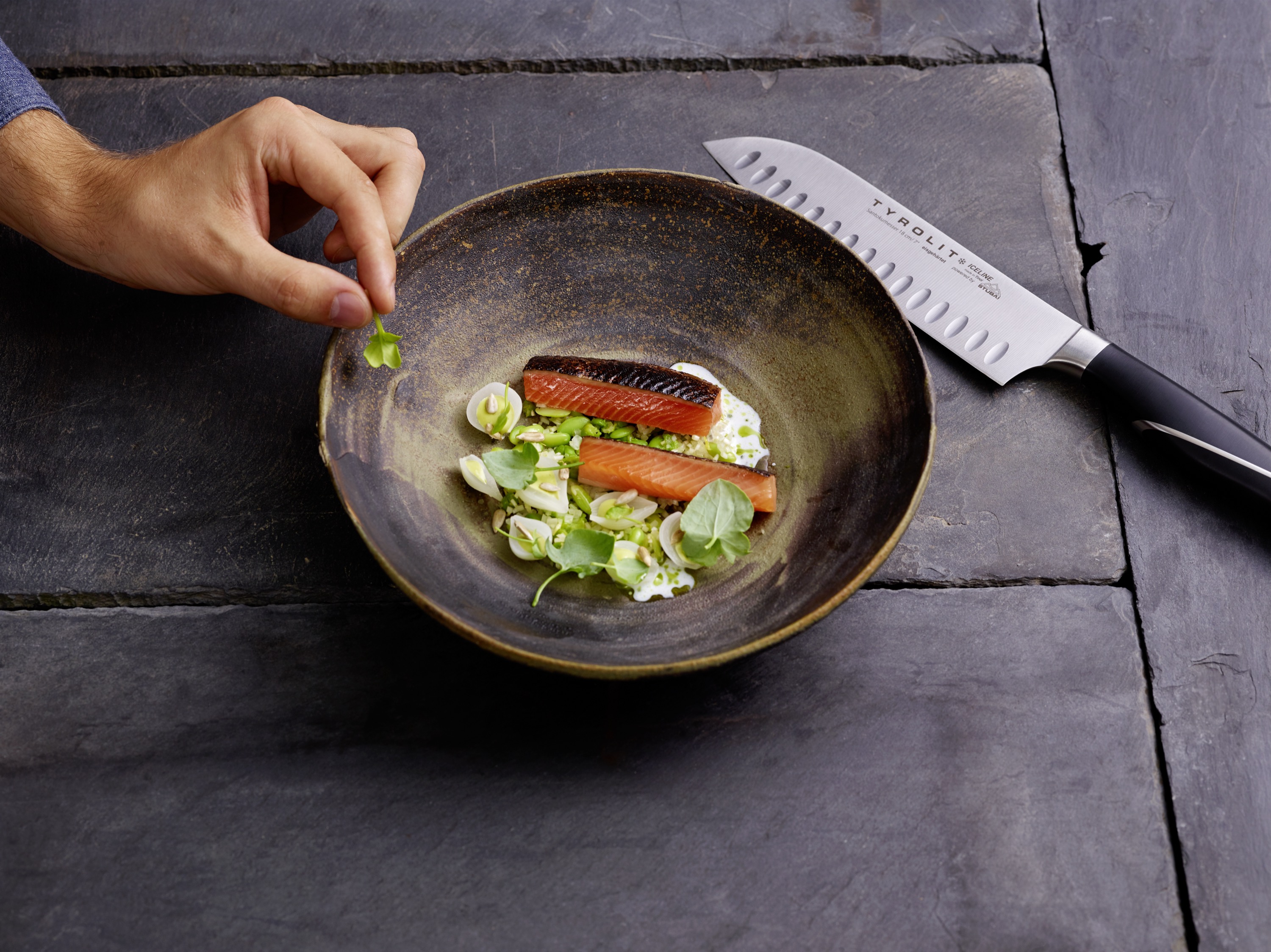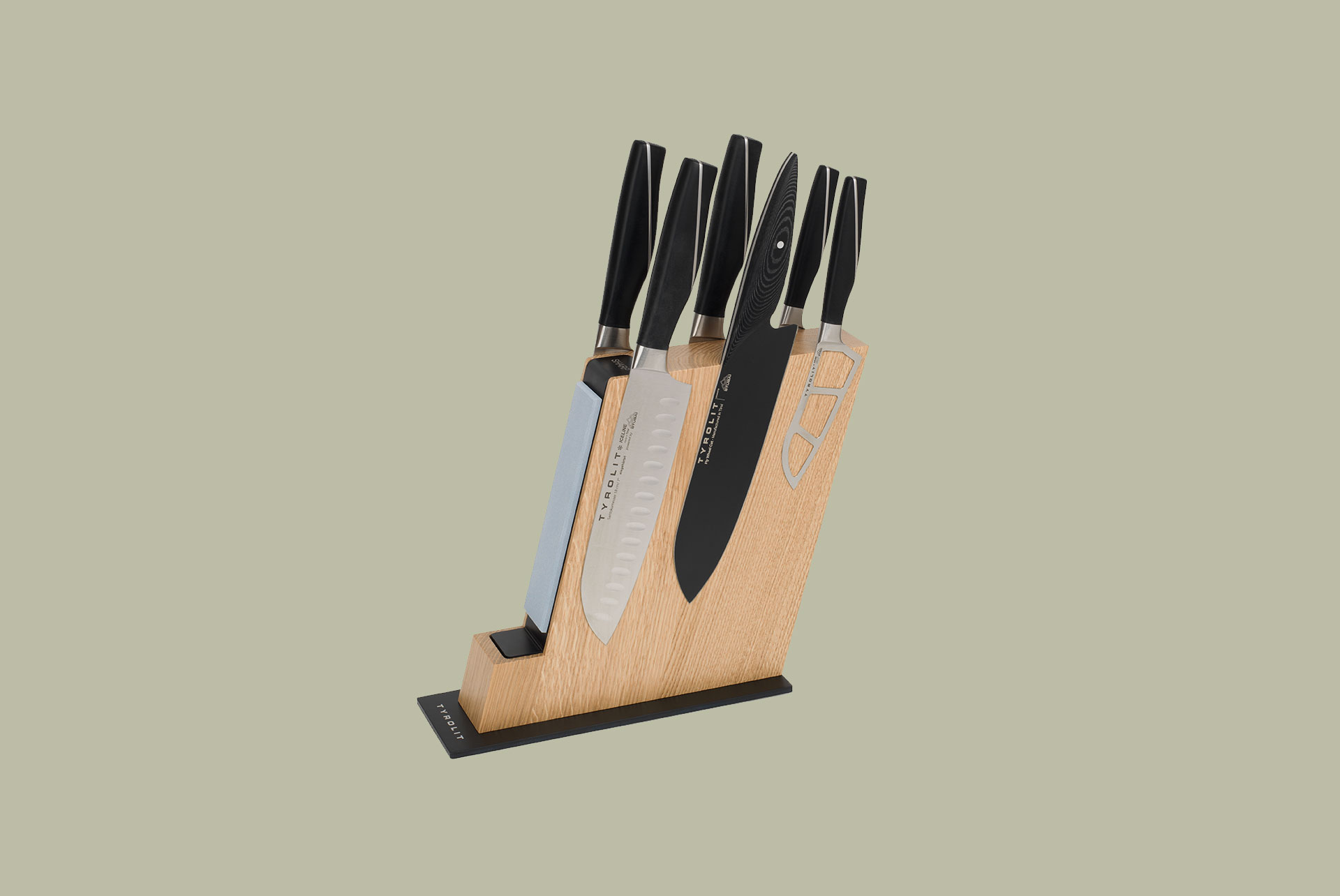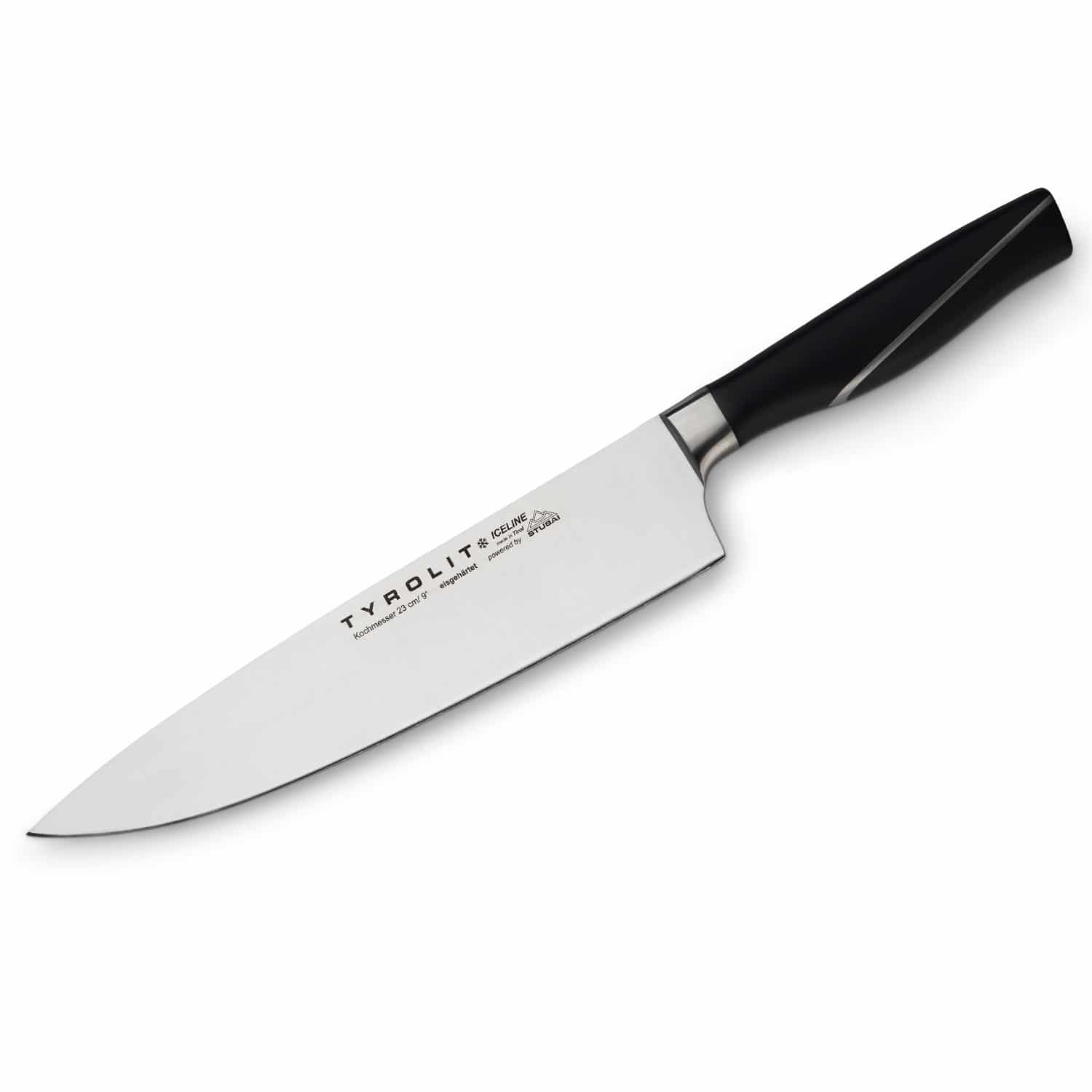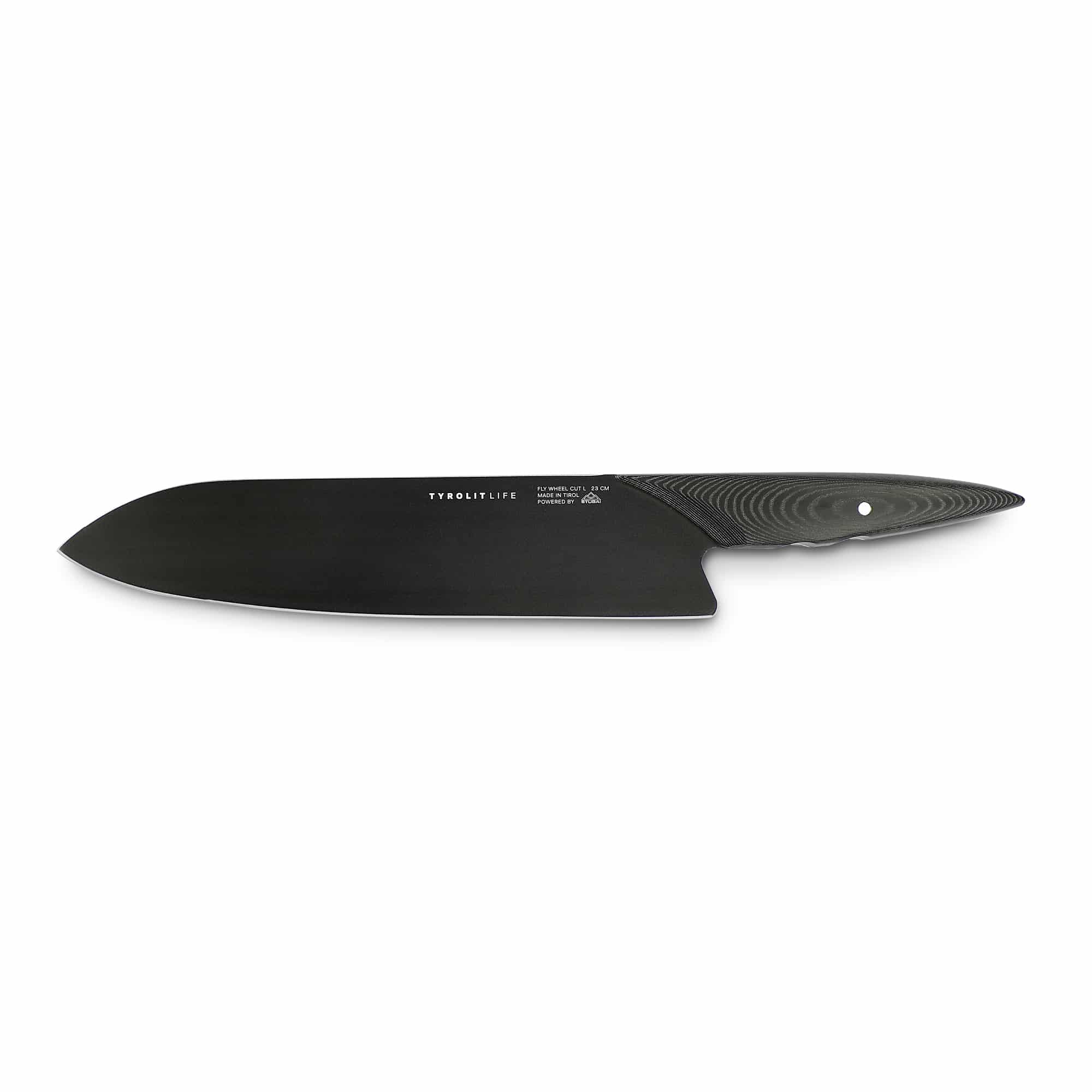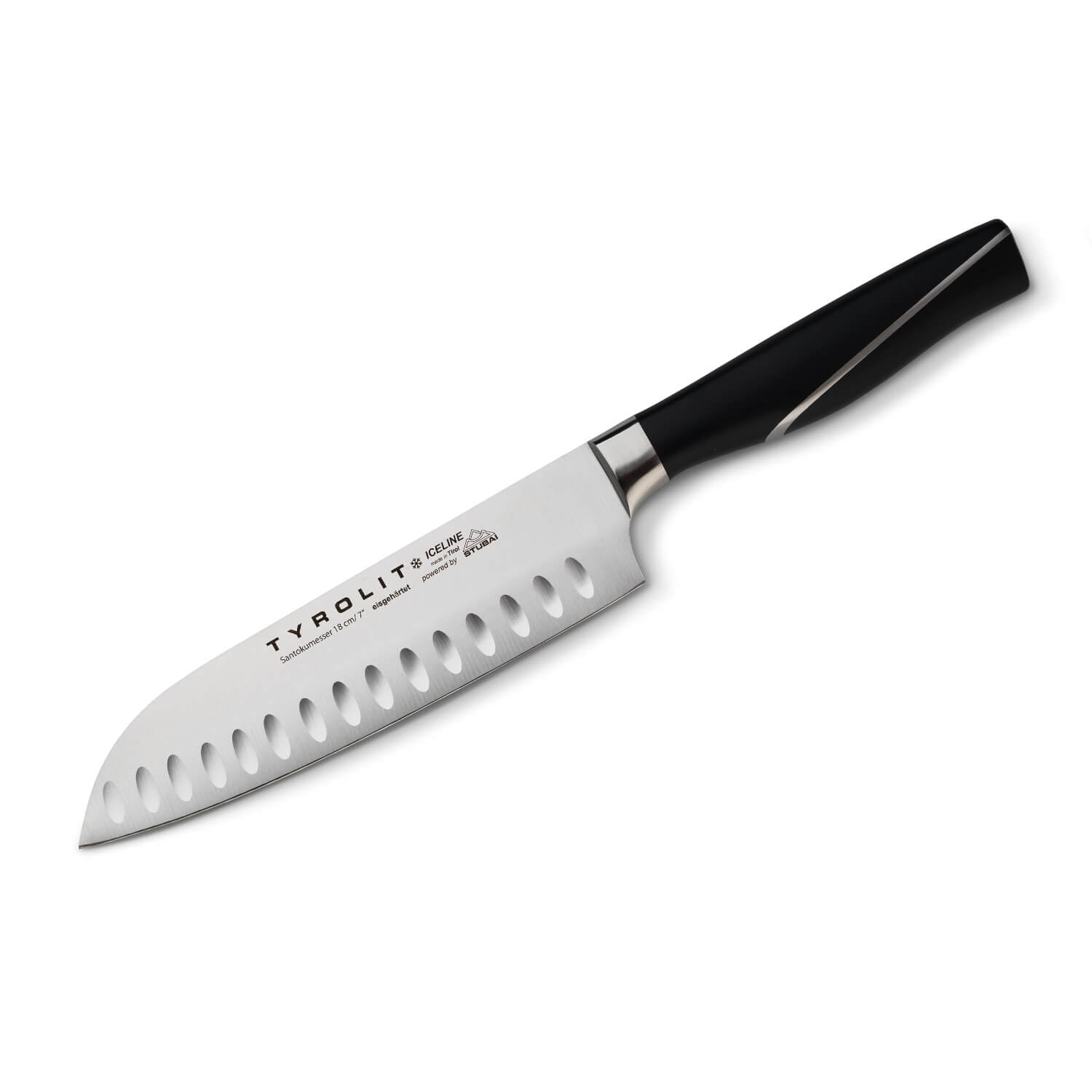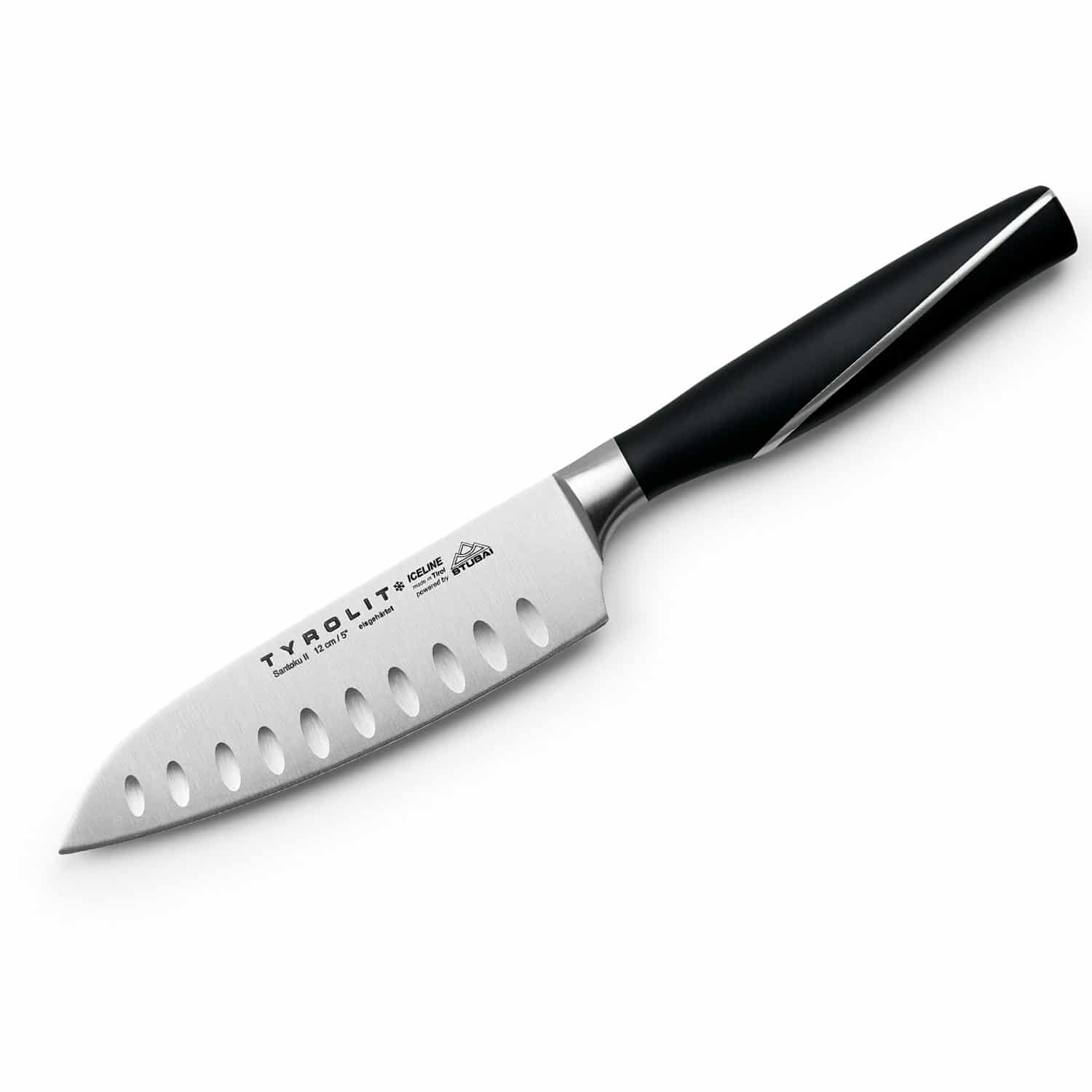What cutting tasks is the Santoku knife suitable for?
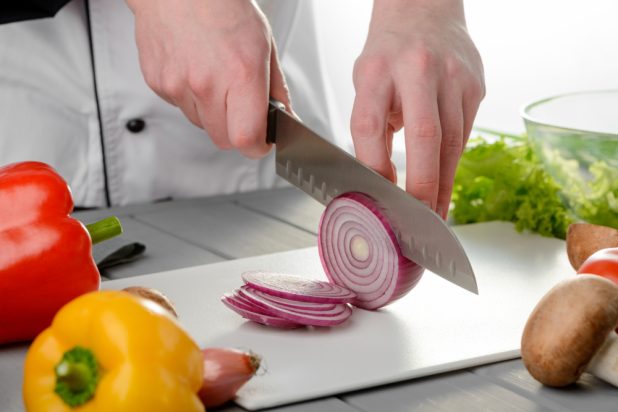
The Santoku knife is a traditional Japanese kitchen knife that is now appreciated in kitchens worldwide. The meaning of “Santoku” – “three virtues” – refers to its main areas of application: meat, fish and vegetables. But what makes this knife so special, and for which cutting work is it particularly suitable?
In this article, we take a closer look at the advantages and applications of the santoku knife, explaining why it should be an essential tool in every kitchen. Furthermore, we delve into what distinguishes European santoku knives from manufacturers like Tyrolit Life.
Santoku Knives – These Advantages Set Them Apart
The Santoku knife offers numerous advantages that set it apart from other kitchen knives. With its high, slightly curved blade, it allows precise cuts and is comfortable to hold. At the same time, the Santoku allows food to be picked up with the wide blade side and placed in the preheated pan, for example.
The Santoku knife is extremely versatile and is often used as an all-purpose knife, as it is ideal for a wide variety of cutting tasks – from shredding vegetables to filleting meat and fish. This makes the Santoku knife a real all-rounder in the kitchen, convincing both amateur chefs and professionals.
What is a santoku knife? The Japanese all-rounder of chef’s knives
The Santoku knife is a true kitchen knife all-rounder and an ideal addition to the classic European chef’s knife. Read more!
“Three virtues”: the Santoku is suitable for this cutting work
The term “Santoku” translates to “three virtues” or “three uses” and refers to the three main areas of application of the knife: cutting, dicing and chopping meat, fish and vegetables.
The wide blade and the special cut enable clean, even cuts and make it easier to shred a wide variety of ingredients. Whether for fine Julienne strips, precise meat slices or delicate fish fillets – the santoku knife is ideally suited for a wide variety of cutting tasks.
Cutting Meat with the Santoku Knife
The Santoku knife is perfect for cutting meat. Its sharp, wide blade enables precise cuts, crucial for preserving the texture of the meat. Available in various lengths, the longer versions, in particular, allow for the preparation of larger meat pieces without fraying the fibers through repeated cutting.
Whether beef, pork, or poultry – the Santoku knife allows for effortless cutting of uniform slices or fine dices. For optimal results, it’s important to hold the Santoku knife properly and employ a gentle, pulling motion. This technique ensures the meat remains juicy and appealing.
Dicing fish with the Santoku blade
The santoku knife is also ideal for shredding fish as it allows for precise and clean cuts. The sharp, wide blade glides effortlessly through the delicate fish meat without tearing it.
When preparing fish fillets, the wide Santoku blade helps to lift individual layers of the fish so that you can easily remove skin and bones. Thanks to the special shape of the blade, fine slices and even pieces can be cut, which is particularly advantageous when preparing sashimi or sushi. In addition, the Santoku is excellent for preparing fish dishes such as ceviche, fish soups or fish tartare.
Fish and dull santoku knives don’t mix. Therefore, make sure to always work with a sharp blade on the delicate fish to maintain its structure. This is where the knife sharpener comes in handy: with a sharpening angle of about 15 degrees, most European knife types are at their best – including the European versions of the santoku knife, such as those manufactured by Tyrolit Life.
In addition, Tyrolit Life offers knife sharpeners with a preset sharpening angle of 15 degrees: either as a separate tool for your kitchen or practically integrated into the high-quality knife blocks and cutting boards.
Dice and chop vegetables with the santoku knife
The Santoku knife is ideally suited for slicing, dicing, and chopping vegetables. With its wide, sharp blade, it can effortlessly cut through both hard and soft types of vegetables.
With the Santoku knife, you can, for example, cut carrots precisely into even slices, quickly dice zucchini or finely chop onions. The wide blade also allows the vegetables to be easily picked up from the cutting surface and placed in the pot or bowl.
A sturdy cutting board and the right technique ensure that the vegetables are processed evenly and efficiently. This also applies to more sophisticated cuts from professional cuisine – from Julienne to Brunoise.
Cutting with the Santoku knife – this is how it’s done
To cut correctly with the Santoku knife, hold the knife tightly, but relaxed in your hand, and apply the blade at a slightly oblique angle. You can also use the “Pinch Grip”, which fixes the upper area of the blade between the index finger and the thumb. The remaining fingers, on the other hand, hold the knife by the handle.
Use the entire length of the blade for clean, uniform cuts. A chopping board made of wood or plastic safeguards the blade and ensures safe operation. Nonetheless, regular sharpening and proper maintenance of the Santoku knife are essential: they prolong the lifespan of your Santoku knife and consistently ensure optimal cutting results.
No clean cutting without sanding. That is why Tyrolit Life has also integrated its ceramic sharpening stones into the high-quality knife blocks and cutting boards. With the preset 15-degree sharpening angle, you can give your knife the finishing touch at any time.
Storing Santoku Knives – Correct and Safe Storage
Proper storage not only protects the blade from damage and wear, but also contributes to the safety in the kitchen. In this article, we will therefore present various methods of Santoku knife storage and explain how you can optimally protect and care for your knife.
Santoku knives from Tyrolit Life – the all-rounders in every kitchen
Tyrolit Life offers both large and small santoku knives that are suitable for different cutting jobs. Their blades are made of high-quality stainless steel, which is particularly durable and corrosion-resistant due to multi-phase ice hardening.
The small Santoku knife of the Iceline knife series, with a blade length of 12 cm, is ideal for precise and fine cutting work. It is lightweight and provides excellent control, making it perfect for cutting small vegetables, herbs and fine slices of meat.
The large Santoku knife, on the other hand, with a blade length of 18 cm, is also ideally suited for cutting tasks such as chopping larger varieties of vegetables, meat, and fish.
In addition to the high-quality Santoku knives, Tyrolit Life also offers practical accessories that perfectly complement your kitchen equipment:
- Knife sharpeners with a preset sharpening angle: The knife sharpeners from Tyrolit Life are renowned for their user-friendly operation and effective sharpening outcomes. They simplify the process for both novices and skilled chefs to sharpen their knives at the correct angle. The predefined sharpening angle of 15 degrees is ideally suited to provide the optimal edge for most European types of knives.
- Knife block with integrated sharpening stone: The magnetic knife block enables you to always have your knives within reach and sharp. With the integrated sharpening stone, you can conveniently resharpen your knives, made particularly easy by the pre-set sharpening angle of 15 degrees.
- Cutting boards with integrated sharpening stones: Tyrolit Life presents high-quality cutting boards crafted from oiled beech wood, notable for their robustness and longevity. These boards are uniquely equipped with an integrated sharpening stone, providing a convenient solution for straightforward resharpening. Moreover, the cutting boards include practical juice grooves, ensuring clean preparation in your kitchen.
FAQs
What do you cut with a Santoku knife?
What is special about a santoku knife?
Which knife is best for slicing schnitzel?

